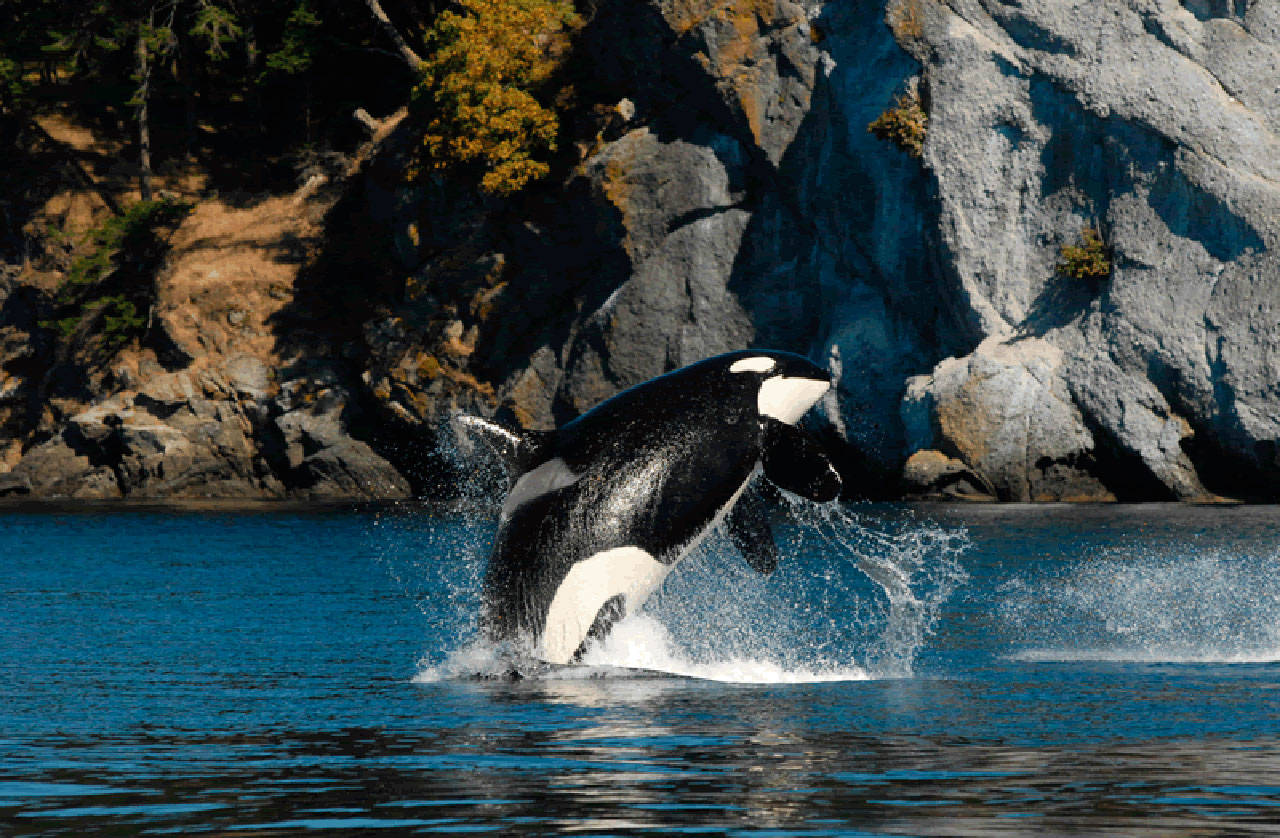San Juan County officials are brainstorming local ways to protect Southern resident killer whales. Suggestions at the June 6 council meeting ranged from more enforcement of current state boating regulations to a 10-year moratorium on catching Chinook salmon in the county.
“If we keep doing things the same way, we’ll get the same result,” said Kendra Smith, manager of the San Juan County Environmental Resources Department about orca conservation efforts.
At the meeting, Smith presented possible goals to protect the orcas who mainly live around the San Juans, but nothing was approved. Smith explained that, with additional funding, her department employees could create and implement a plan to address the orcas primary threats of food loss, pollution and increased vessel noise.
Six Southern resident killer whales died in 2016, leaving only 78 at the start of 2017. In the 41 years of tracking orca counts, a population lower that 78 has only been recorded four times, according to Center for Whale Research data.
The county plan, said Smith, could include local alternatives generated from the recently proposed whale protection zone to the fisheries department of the National Oceanic and Atmospheric Administration. The San Juan County Marine Resources Committee will create a report on the comments.
“People have come up with great ideas,” said Smith about the opinions submitted to NOAA during the petition’s roughly three-month public comment period. “It’s not even a matter of necessarily rehashing those ideas, it’s figuring out how to implement them.”
If the NOAA petition passes, commercial and private whale watching boats would be prohibited from entering the entire length of the west side of San Juan Island, where orcas often feed. Members of three environmental organizations petitioned for the protection zone because boat noise hinders orcas’ ability to locate food, which they do by omitting noise and listening to the length of returned vibrations.
To Councilman Bill Watson, the main reason for the orcas’ low population is their dwindling food source: Chinook salmon.
“The reality is, if there was more food, most of these issues would go away,” he said about the orcas’ threats. “We need to take some drastic measures.”
Those possible measures included having the county: Enforce a 10-year moratorium on catching chinook salmon in San Juan County; Enforce a low-speed zone in Haro Strait for all vessels, including private and commercial; Fund local Chinook salmon hatcheries to increase production; Prohibit building waterfront walls on soft beaches to protect Chinook’s food source of forage fish, even if the beaches don’t include forage fish today. Sometimes rock or concrete walls are built on beaches to prevent erosio; Stop introducing invasive species, like Atlantic salmon, which feed on the same forage fish as Chinook; Prevent the destruction of eelgrass to protect forage fish.
Councilman Rick Hughes asked Smith to determine which of Watson’s suggestions county officials could realistically achieve and present them at the next discussion.
Hughes requested short-term goals as well as the roughly two-year plan that Smith presented. His other suggestions included: organizing local boating regulation enforcers, like the sheriff’s boat and The Whale Museum’s vessel to coordinate schedules, so one is always on the water; creating and distributing marketing materials to local docks, ferries and yacht clubs on boating regulations; requesting whale watch company owners to partially fund county staff designated to work on orca protection, as their businesses earn profits from the conservation; using the state lodging tax, which is partially returned to the county, to fund county staff designated to work on orca protection.
The date Smith will return to council for more discussion has not been set. To review the proposed goals and basic outline, visit www.sanjuanco.com/903/Council-Agendas-and-Video and click the June 6 meeting link.



